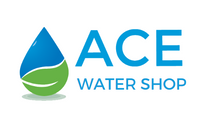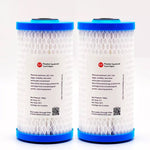You have no items in your shopping cart.
For dealers, distributors, and wholesalers of water quality goods for commercial enterprises, point-of-use (POU) bottle-less coolers represent a fast developing market potential. Learn about the Point of Use Water Cooler Installation tips in this article.
Over one million bottle-less coolers are in use today, accounting for roughly 18% of all water coolers. This market category is increasing at a double-digit rate, which is fantastic news for dealerships trying to boost recurring revenue and client retention.
Similarly, more homes and businesses are becoming bottle-free. It's because it's more cost-effective, healthier for the environment. It also promotes employee safety and wellbeing, and is more convenient. Bottle-less coolers are becoming a more appealing alternative to traditional bottled water coolers. They're newer, simpler, and more intuitive technology becomes available.
POINT OF USE WATER COOLER INSTALLATION
Installing a point-of-use water cooler may appear difficult at first, but it becomes surprisingly simple once you understand the steps. Most Bottleless Dispensers come with the necessary tools and a full manual to walk you through the installation procedure, making it a breeze.
Choose a perfect site for the cooler between a water line and an outlet before taking it from the box. You can begin the procedure of attaching a water line when the space has been cleaned, and the waterline has been turned off.
- Install the water dispenser close to a grounded wall outlet on a leveled, stable surface. DON'T PLUG THE POWER CORD UNLESS THE INSTALLATION IS COMPLETE.
- After removing the existing cold water supply, install the included T-shaped Feed Water Adapter. Directly attach the cold supply of water to the top of the adapter and the water dispenser line to the quick attaching piece once the adapter is in position. DON'T connect to the hot water supply. The hot water will harm the filters.
- Ensure the connections to the cold water source are secure by gently pulling on the lines.
- After securing all connections, turn on the waterline and the unit. Water will be pumped through the purifier and stored in stainless steel reservoirs by the water dispenser.
- Always be sure you're connected to a safe water source! Ask the building manager to know the inbound potable water supply if you're unsure. Low water pressure may indicate that the water is coming from a Cistern/Tank rather than the mains.
SWITCH TO POINT-OF-USE WATER COOLER
Commercial clients have traditionally used bottled water coolers in patron waiting rooms and employee lounges. However, the famous "water cooler talks" in the office frequently come at a cost.
When you consider that small businesses typically consume four bottles of bottled water per week at the cost of up to $9 per bottle, the variable price of buying 5-gal containers of bottled water can mount up to approximately $150 per month. On the other hand, larger organizations can spend hundreds of dollars every month on supplied bottles.
HOW IT WORKS
A point-of-use water cooler connects to an existing water line in a building and draws water directly from the public water supply. As a result, it's sometimes referred to as a point-of-use water cooler. It does not imply that the water cooler merely provides tap water as a water fountain does. Most water coolers offer filtered water.
BENEFITS OF INSTALLING A POINT-OF-USE WATER COOLER
There will be less trash.
- Did you know that it takes three times as much water to produce a single bottle of water as it does to fill it? That is not a five-gallon jug but a single bottle. Although those bottles are recyclable, they take decades to disintegrate and pollute our water and soil.
It uses less fuel.
- Thousands of gallons of fuel are burned for the bottling, storage, and shipping of refill bottles. The emissions then damage the air we breathe. A water cooler that is plumbed in is far more environmentally friendly.
It uses less room.
- Those massive, five-gallon bottles of water are not only heavy, but they also take up a lot of valuable workspaces. As your team develops, you'll need to increase the amount of space you set out for water bottles. A plumbed-in water cooler connects directly to your water supply.
Costs are lower and more predictable.
- Remember how bottled water bottling, storage, and transportation affect the environment? When you use a bottled water cooler, you pay for it, and those expenses could arise at any time. You have to pay for the cooler rental and an annual filter change with a plumbed-in water cooler. You must, of course, pay your water bill.
There is no limit to the amount of hot or cold water that you can use.
- Employees who do not have access to freshwater are almost as irritable as those who don't have access to fresh coffee. A plumbed-in water cooler never runs out. You won't have to worry about keeping track of the water supply or coordinating deliveries.
Water that is safer and cleaner.
- A plumbed-in water cooler's filtration and purification systems assure clean, healthy drinking water. It also lowers the possibility of contaminants in and around your water cooler. To keep bacteria from growing in the water tank, we employ multi-stage filtration with sediment and granular activated carbon (GAC) filters, as well as a UV lamp.
FINAL THOUGHTS: Point of Use Water Cooler Installation
Point-of-use water coolers are an efficient method to get drinking water at home or the office. They allow you to provide your family or guests with fresh, clean water. No need to worry about running out of fresh water or having to replenish the water gallon.
More individuals are considering a bottle-less water filtration system. But they're concerned about the installation process, which necessitates connecting the cooler to your water source. It's not always necessary to hire a plumber or an expert.










